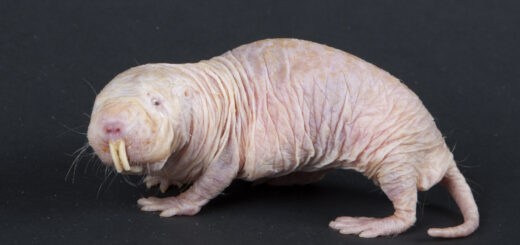Invasion of the Death-Defying Mutant Mice
Eva Cook investigates a new kind of uninvited houseguest – coming soon to a town near you.
Of all the infestations commonly known to homes, a mouse infestation is probably one of the cutest. Large, comedic ears and pointed little noses covered in the finest flurry of whiskers, coupled with feelings of nostalgia for Jerry, Mickey, Pinky and the Brain should make them a welcome addition in any family home. Of course – as anyone who has ever had to live in a mouse infested property will testify – mice are a serious pest: carrying diseases, gnawing constantly on anything they come across and, if it happens to be something connected to an electrical supply, pose a serious fire risk as well. As if this wasn’t bad enough, a new breed of ‘supermice’ have arisen right here in Glasgow, seemingly targeting the West End, which have evolved like the X-men and now have the power to withstand the mightiest of poisons.
Average house mice have a lifespan of around one year and tend to be found in warm dark spaces where they nest and breed at the accelerated speed of every five weeks. As a yardstick, it is estimated that if two mice were left in a building with a constant food source, their population would grow to over two thousand in the space of twelve months1. On top of this, they are extremely quick to adapt to changing environments: a trait that has marked supermice an epidemic to be reckoned with.
According to Brian McKan (not his real name for security reasons), a pest control technician operating within the Greater Glasgow area, this new breed was first noticed in the U.K. in the city of Birmingham, an area densely populated with warehouses stockpiling large quantities of food produce for the ethnic market. So rife was the problem in these warehouses that it was reported 5kg bags of rice would be consumed in the space of one night, leaving only chewed remnants of a sack behind. Businesses, eager to protect their wares, sought advice of both large-scale professional pest control companies and scientists in a bid to tackle the problem.
What was discovered was that though the so-called supermouse shares similar characteristics and breeding patterns of its common counterpart. It is thought that their genetic code has been altered by the cross breeding of German and Spanish mice with the Algerian mouse, which some have claimed is an entirely different species. Michael Kohn from Rice University in Houston, Texas led a team of researchers in investigating similar infestations in Germany, where a pest control specialist claimed mice were not expiring after being directly sprayed with poison.
Thanks to this genetic mutation, the European house mouse has become resistant to commonly used poisons. The gene in question is vkorc1 and manages the production of Vitamin K, required for the synthesis of important substances involved in blood clotting such as prothrombin. For the European house mouse, a mutated version of vkorc1 makes it resistant to Warfarin, an anticoagulant conventionally used as a rodent poison.
When his team sequenced the mice for vkorc1, Kohn was astonished: “I said, ‘this cannot be a common house mouse. What type of animal did you send me here?’ The gene sequence was identical to Mus spretus (the Algerian mice), which looks similar to house mice but does not normally occur in Germany. We could see that a big chunk of their DNA looked like Mus spretus but genetically, these obscure bromadiolone-resistant mice looked like ordinary house mice. This is a freaky mouse”.
Two processes have occurred to allow this mutation in mouse species. The first is point mutation, which can occur spontaneously during DNA replication or as the result of factors such as mutagenic chemicals. In this case, desert dwelling Algerian mice acquired the anomaly this way to counter a vitamin K-deficient diet. The other process is horizontal gene transfer. In this case, the resistance was transferred directly from Algerian mice to European house mice. Kohn says it’s rare for this to happen with mammals as usually it’s a microbe process 2.
“A key element of this study is that we’ve caught evolution in the act,” said Kohn 3.
Exterminating large numbers of mice is never an easy task and supermice complicate matters in that they are cunning enough to actively avoid temptation and refuse to eat traditional rodenticides, so perceptive they have become to the threat. Pest control technicians and scientists have been forced to keep up with the crafty nature of these creatures by cultivating three different generations of poisons in quick succession.
Warfarin was first introduced to pest control methods in the 1950s, which eventually proved ineffective as rodents soon began to recognise and built up an immunity to it. A second-generation anti-coagulant known as Difenacoum was developed as a cereal based poison with a high moisture content that proved more palatable to mice as, unlike rats, they do not actively drink. Though these poisons seemed effective for a while, a problem arose in the shape of stripping mice of vitamin K. So intuitive the early supermice became that if they ingested a second-generation poison, they would actively seek out a vitamin K rich food, such as red skinned peanuts, to counteract its effect. The most recent development to enter the pest control market is Brodifacoum, a third generation “one feed kill”. Commonly known as “pulse bait”, it is thought to be more humane as it kills immediately rather than allowing the rodent to digest poison several times to take effect 4.
In addition, this gave rise to a problem of paranoia within the mice. Most rodents, particularly rats, are “neophobic” – the fear of new things – meaning they are paranoid creatures who wont feed until they become used to a foodstuff that has been left out or discarded for a few days. Mice, on the other hand, are inquisitive feeders and will tend to eat anything they come across. Supermice are distinct in this matter as they have shrugged off the instinctual habits of their kin and instead developed similar characteristics to their rodent cousins in displaying neophobia “almost to the point of sheer fussiness” according to McKan. Businesses, keen to establish which foodstuffs these supermice were targeting, have seen evidence of this in that even by moving a bag of sesame seeds, for example, to various spots on a tall stack of shelves, the mice consistently picked out the bag of seeds they favoured, disregarding other seemingly tempting produce.
Though there is no hard evidence at present to explain why specifically the West End of Glasgow has found itself at the mercy of these rodents, influences such as the area’s large ethnic community and its corresponding high number of foodstores stocking the mice fodder of choice have been suggested. Though McKan is reluctant to tar all with the same brush, he explains that the high volume of students living in close proximity can pose a problem. Two major issues are incorrect disposal of rubbish and the fact that many flats in this area are being let for short periods of time, thus there tends to be no long term planning of residents to deal with infestation problems properly. Take into account that many of these flats are housed in old tenement buildings and that mice can squeeze through gaps of 6mms with ease and therein lies part of the problem.
So are we fighting a losing battle? Not necessarily.
If you happen upon a supermouse or two…or three…or…well…here’s what you can do:
- Exercise hygiene – seems obvious but disposing of food properly can make a huge difference in the war against supermice. Dumping a bin bag on the ground is like placing a big invitational stamp on the entrance to your property. Disposing rubbish into something with four solid sides and a lid is a simple, but effective obstacle for pests.
- Don’t overlook the small things – this goes for crumbs, peelings and all those lost bits of pasta and peas that have leapt to the floor and rolled under the cooker over the months.
- Look for marks around the edges of appliances and skirting boards. Mice have very greasy fur which leaves a residue wherever they’re squeezing through: follow this to determine their point of entry.
- Block it up – remember mice can and will chew through almost anything. Steel wool is reputed to be a cheap and an effective barrier so make like a mouse and get on all fours, cramming it in to even the tiniest nooks and crannies.
- Now you’ve blocked up the escape/ entry points, call in the council to put some poison down.
- Still there?? Call in the big guns. At this rate, we’ll be in need of Ripley-esque flamethrowers in the war on our furry little mutant foes.
References
- Interview with Brian McKan, [not his real name for security reasons] of Pestguard Services. 2 August 2011
- Read about that here.
- Michael H.Kohn, “Adaptive Introgression of Anticoagulant Rodent Poison Resistance by Hybridization between Old World Mice”, 21 July 2011
- Read about that here.










